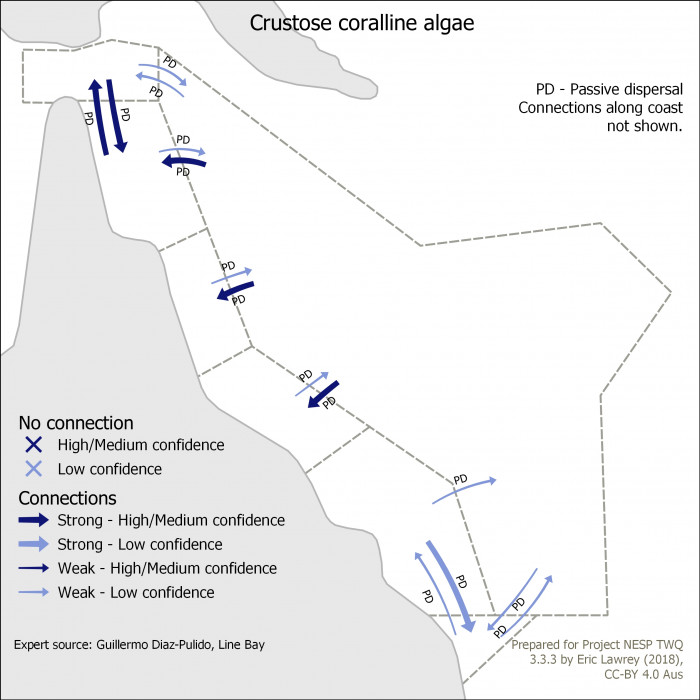Crustose coralline algae connectivity
What is Crustose coralline algae and why it is important?
Crustose coralline algae (CCA) are a red macroalgae (seaweed) that accumulate calcium carbonate and generally grow as encrusting, pink-colored, veneers over the reef substrate. While often inconspicuous to the casual observer, CCA play a vital role in the maintenance of many coral reef systems. The rock-hard veneers they form on the high-energy zones of wave-exposed reef crests protect the underlying reef substrate from rapid erosion and breakdown. CCA are also crucial for cementing together dead coral skeletons and rubble, contributing substantially to the processes of reef consolidation and growth. Some species of coralline algae are also settlement cues for hard corals, acting as critical facilitators of larval recruitment and coral population recovery.
Key concepts that relate to connectivity
Like most marine macroalgae, crustose coralline algae reproduce by releasing gametes into the water column, where they form propagules which drift until competent to settle. While in the plankton, CCA propagules are effectively passive particles that drift with prevailing currents until they settle on suitable substrate (or until they die or are consumed). The planktonic phase of algal gametes in in the order of 4-11 days in laboratory conditions but may be much longer in the sea. This allows for considerable dispersal resulting in biological connections between reefs extending at least tens of kilometres.
For CCA, the patterns of connectivity between reefs creates networks of interdependencies that are important to the recovery potential, and long sustainability, of populations. The processes that determine connectivity (mostly ocean current direction and strength) link CCA populations between the Great Barrier Reef and all adjacent jurisdictions.
A range of threats can compromise connectivity, including chemical spills, degraded water quality and extreme temperatures. The dependence of many reefs on upstream (source) reefs for supply of CCA propagules also means that the condition of coralline algae in one jurisdiction may be important to the sustainability of CCA populations in an adjacent jurisdiction.
References
Fabricius K, De'ath G (2001) Environmental factors associated with the spatial distribution of crustose coralline algae on the Great Barrier Reef. Coral Reefs 19:303-309
T.A. Norton (1992) Dispersal by macroalgae, British Phycological Journal, 27:3, 293-301, DOI: 10.1080/00071619200650271





